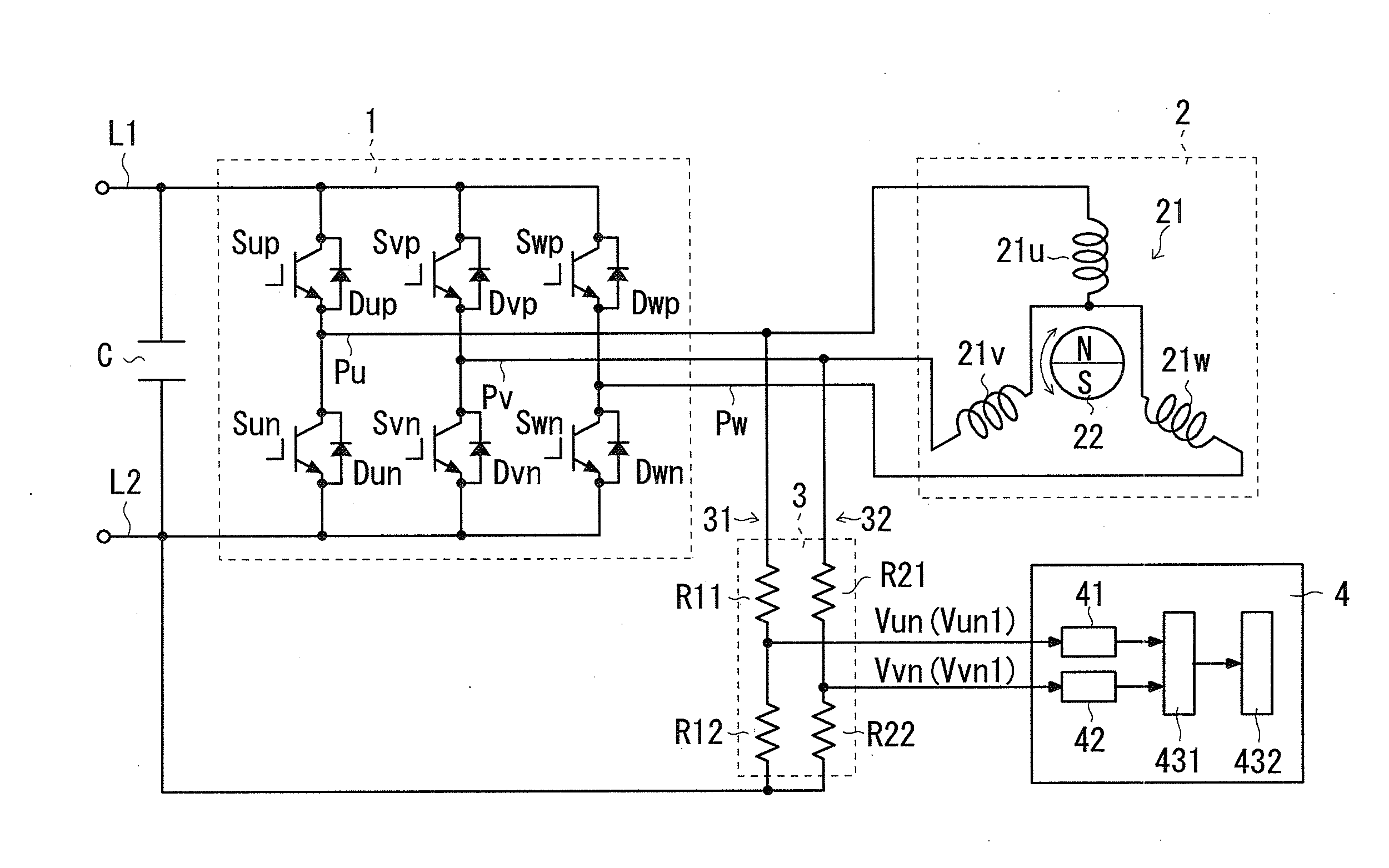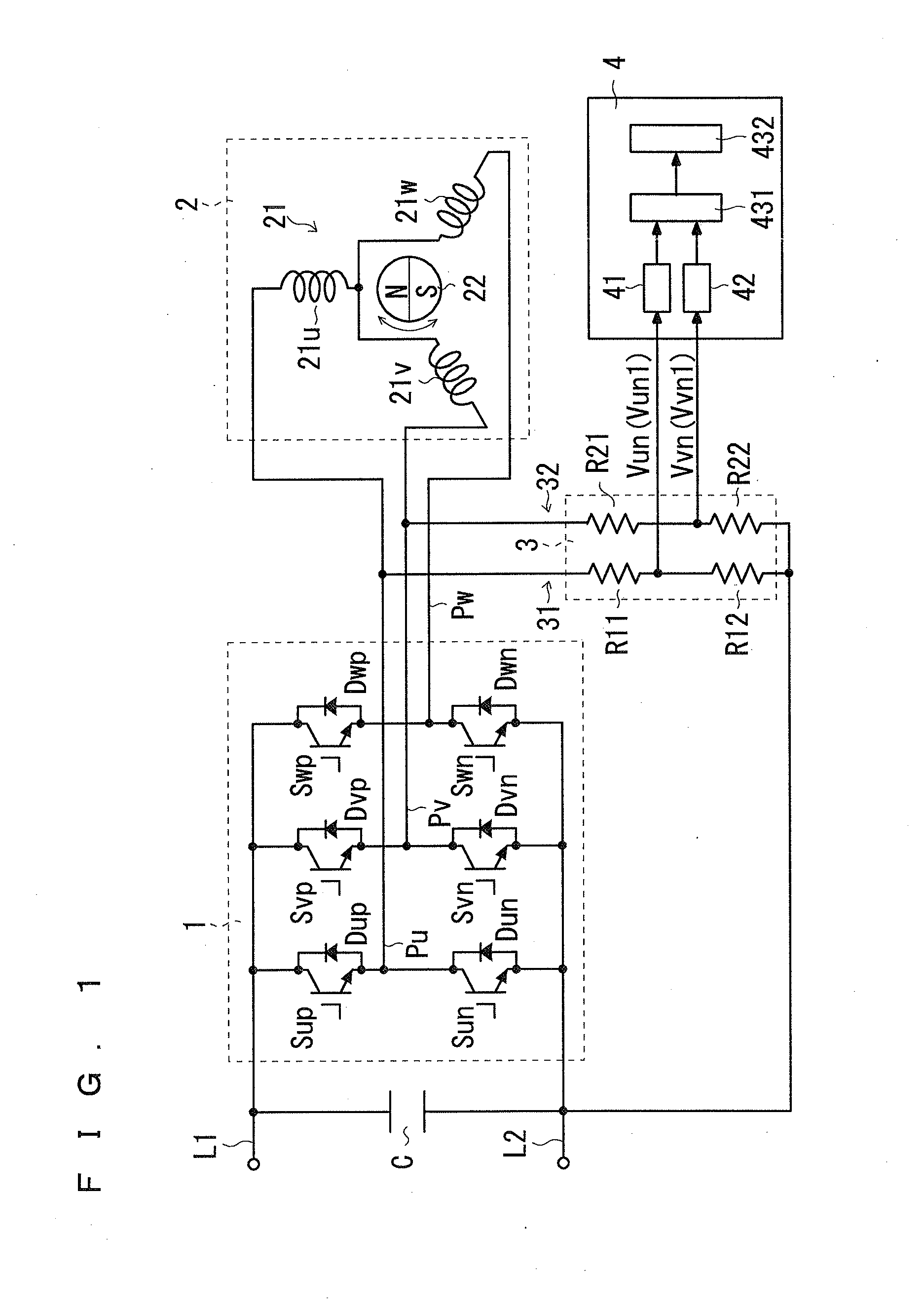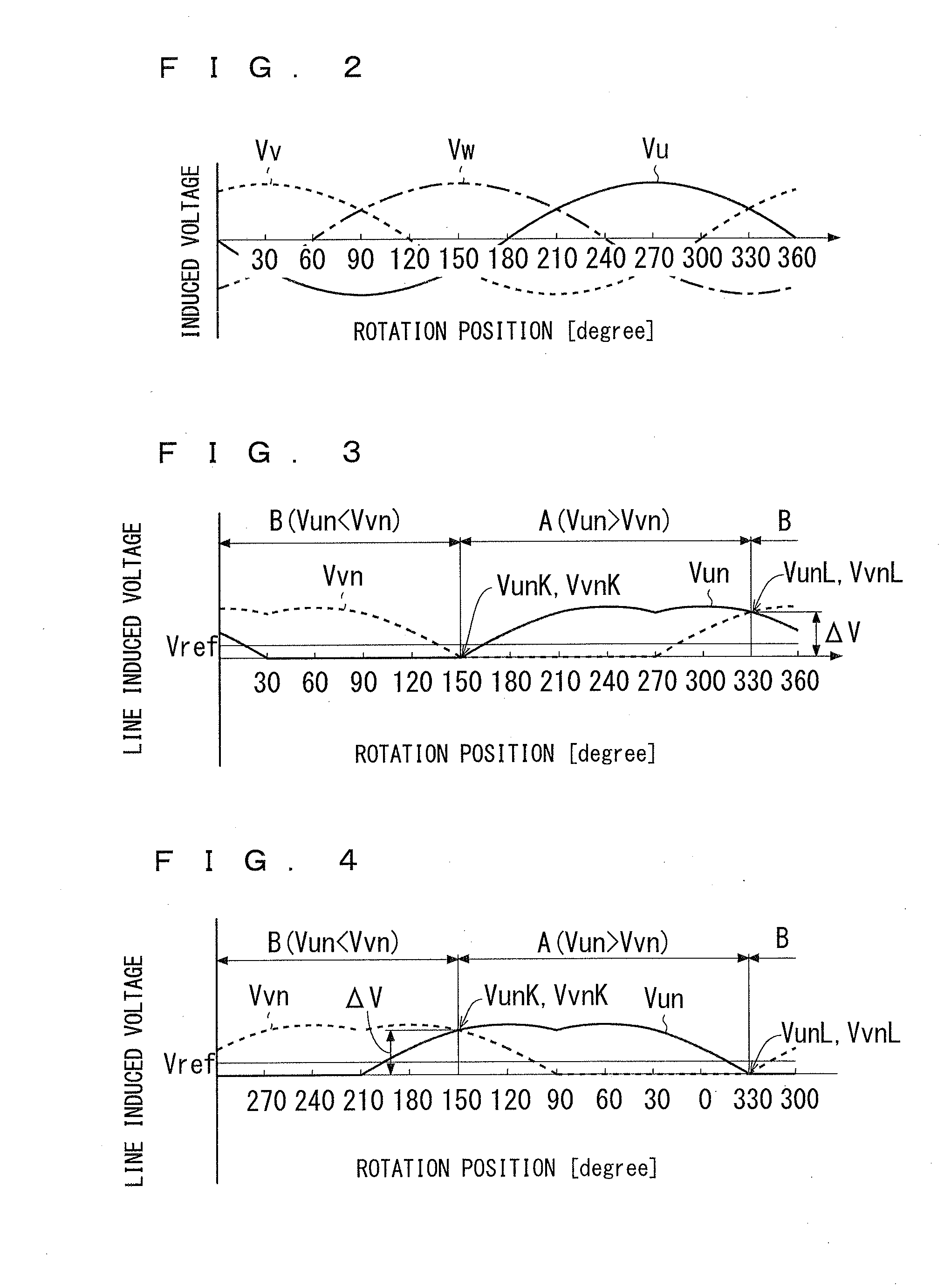Rotation position detection device and air conditioner
- Summary
- Abstract
- Description
- Claims
- Application Information
AI Technical Summary
Benefits of technology
Problems solved by technology
Method used
Image
Examples
first embodiment
[0068]As shown in FIG. 1, the present motor control device includes a power converter 1, a motor 2, and a rotation position detector 4.
[0069]The power converter 1 is connected to DC lines L1 and L2 at an input side thereof, and is connected to AC lines Pu, Pv, and Pw at an output side thereof. Between the DC lines L1 and L2, a DC voltage is applied. This DC voltage is applied by a converter not shown, for example. This converter converts an AC voltage from a commercial AC power supply, for example, to a DC voltage, and applies this to between the DC lines L1 and L2. As such a converter, a diode rectification circuit formed by a diode bridge, for example, can be employed. For the voltage of the commercial AC power supply, any one of 100V, 200V, 220V, and 400V can be employed, for example. In the case where the commercial AC power supply outputs a single-phase AC voltage, the DC voltage is √2 of the voltage of the commercial AC power supply, and becomes 141V, 283V, 311V, and 566V resp...
second embodiment
[0117]In the second embodiment, the voltage detector 3 includes a detection-voltage limiting unit that limits the detection voltage to a predetermined value, when the line induced voltages Vun and Vvn are equal to or greater than a predetermined reference value.
[0118]For example, as shown in FIG. 9, the voltage detector 3 further includes a protection circuit 33 as compared with the voltage detector 3 in FIG. 1. The protection circuit 33 which is an example of the detection-voltage limiting unit outputs a voltage of a predetermined value to the rotation position detector 4 when the line induced voltages Vun and Vvn are equal to or greater than the reference value. That is, the protection circuit 33 avoids application of a voltage exceeding the predetermined value (hereinafter, also referred to as upper limit value) to the rotation position detector 4. Accordingly, the protection circuit 33 can protect the rotation position detector 4 from an excess voltage.
[0119]The protection circu...
third embodiment
[0143]In the third embodiment, the rotation direction can be specified. As a point different from the first embodiment, the present motor driving device is further provided with a rotation-direction specifying unit 5 shown in FIG. 14. The rotation-direction specifying unit 5 receives from the detector 431 that the line induced voltages match each other, and further receives at least one of the line induced voltages Vun and Vvn.
[0144]The rotation-direction specifying unit 5 specifies a rotation direction as a predetermined direction based on at least one of values of the line induced voltages Vun and Vvn when the line induced voltages Vun and Vvn match each other. This will be described in detail.
[0145]As shown in FIG. 3, in the forward rotation direction, the line induced voltages Vun and Vvn when the line induced voltage Vun exceeds the line induced voltage Vvn (when the rotation position is 150 degrees) take a relatively small value (for example, zero). Hereinafter, the line induc...
PUM
 Login to View More
Login to View More Abstract
Description
Claims
Application Information
 Login to View More
Login to View More - R&D
- Intellectual Property
- Life Sciences
- Materials
- Tech Scout
- Unparalleled Data Quality
- Higher Quality Content
- 60% Fewer Hallucinations
Browse by: Latest US Patents, China's latest patents, Technical Efficacy Thesaurus, Application Domain, Technology Topic, Popular Technical Reports.
© 2025 PatSnap. All rights reserved.Legal|Privacy policy|Modern Slavery Act Transparency Statement|Sitemap|About US| Contact US: help@patsnap.com



